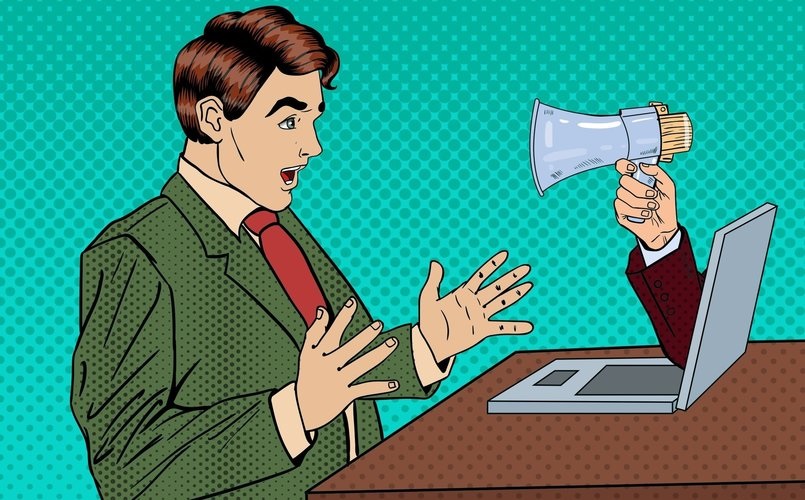In the wonderful age of the Internet, where your Inbox might be groaning with emails, you might find yourself belting out a quick response and hitting the Send button without giving too much thought to what you’ve just written. This behaviour can leave you exposed to the practice of bad email etiquette which has the potential to sabotage your reputation both personally and professionally.
There are four ways, and only four ways, in which we have contact with the world. We are evaluated and classified by these four contacts: what we do, how we look, what we say, and how we say it. – Dale Carnegie
Many of you will work your way through hundreds of emails daily if your business is busy, and because of the sheer volume of messages we are answering and sending, it’s easy to make mistakes or embarrassing errors, some of which can have serious consequences. But I’m always surprised to see how many professionals still don’t know how to use email appropriately.
Here are just a few tips on how to perfect your e-mail etiquette when sending business emails.
Common courtesy email etiquette
One of the biggest challenges with email communications is trying to get your message across in a simple and concise way.
One of the problems with email is it lacks the visual actions you would receive if you were sitting down with someone face to face, like body language, tone of voice and facial expressions. Having these visuals enables you to get a feeling of what and how things are being said. So, it’s necessary to think about this when communicating by email and how you will be perceived by the receiver.
Firstly, starting your emails with a friendly ‘hello’ or ‘hi’ is fundamental for a professional business email and including a sign off with ‘regards’ or ‘thank you’ is common courtesy – think of your emails as short business letters.

How many emails do you receive that don’t have a greeting and how does that make you feel?
Think about it this way: you don’t leave out the greeting when you make contact with someone by phone, so why wouldn’t you extend this small courtesy in an email?
People will say they haven’t got time to say Hi.
If you haven’t got time to be courteous, you might want to think again about being in business.
Emails are an informal communication tool but that doesn’t mean your standards should slip by not being courteous.
Without a simple greeting your emails will come across as terse and unfriendly. Business emails are not the same as sending a text but many of us treat emails, which are important relationship and networking communications as if they are.
When you don’t use a greeting, your recipients may over time, cringe every time they see something in their inbox from you and be reluctant to open your emails.
Always be courteous, it only takes a few seconds.
A small example:
Without a greeting – Can you give me an update on the project we discussed as soon as possible?
With a greeting – Hi Jane, Can you give me an update on the project we discussed as soon as possible – thank you.
With the addition of only four words – you have made the time to say Hello and thank you – a small courtesy that takes just a few seconds.
The importance of your subject line
Be upfront with the subject line and let the receiver know exactly what your email is about immediately. If you make the subject line clear and direct you have more chance of your email being opened, as it lets the recipient know what concerns you are addressing. In my experience, your emails will be opened sooner, rather than later, based on the subject line. It’s a bit like a blog post, the subject should reflect what the email is about, nothing more, nothing less.
Some examples of a good subject line might be:
Update on meeting dates
Following up on your presentation
More suggestions for the upcoming proposal
When you send an email, every word matters. If you are describing a problem or sending instructions, make sure it is defined clearly, keep it short and don’t waffle on.
Respond in a reasonable time
There is a plethora of business advice around on when to check your Inbox and many will say you should only open your emails at certain times throughout the day.
This might work for some people, but I prefer to take a quick look at my emails every 30 minutes or so, otherwise how do you know something is urgent? You don’t have to open every email, but a quick glance will tell you if something needs your immediate attention or not.
Put yourself in the customer’s position – if they are waiting for an answer, a few minutes can feel like forever and the longer they wait, the more upset they can become.
As you will know, there are those that can he relied on to respond quickly… and those who don’t.
My advice would be to strive to be one of those who do.

Being responsive sends a positive message that shows you are organised, reinforces your interest and puts you ahead of your competitors.
The ALL-CAPS shouting email!!
One of the cardinal rules of writing online, particularly in email communications, is never use all capital letters.
This is one mistake people make when trying to get their message across – you might think it works, but experienced users will perceive your email as rude and inappropriate.
Do you like being yelled at?
Even though writing in all caps attracts the attention of the reader, it creates annoyance, which is probably not what you intended.
Emails in capitals comes across as rude and seen as the online equivalent of SHOUTING!
What do you think when you receive something like this? PLEASE GET BACK TO ME AS SOON AS YOU CAN
I can’t speak for you but to me it’s offensive and unpleasant and one of the biggest mistakes you can make.
Reply to all button
I’m always surprised how many people don’t use this or even know about it.
If you receive an email with other recipients included, it makes sense to ‘reply to all’ (if appropriate) rather than use the ‘reply’ button which only goes back to the sender. It can be frustrating to have to forward the reply email on to the others who should be included and kept in the email thread.
Having said that, there are some basic ground rules for using reply all. Generally, if your response is meant to be seen by all the recipients in the email, go ahead and hit reply all, but if your response has no effect on them, then don’t reply all. If you have something valuable or necessary to add to the conversation, use reply all, but otherwise don’t. Using common sense and discretion is the key here.
Just on the topic of email reply… what do you do when you receive an email that’s not meant for you?
Do you just hit the delete button and forget about it?
You probably won’t get too many of these, but if an email is accidentally sent to you and especially if the sender is expecting a reply, it would be good email etiquette to shoot of a quick email, something like this – and even more so if the person works in the same company or industry as you.
“I just received this email and don’t think you meant to send it to me, just wanted to let you know so you can send it to the correct person.”
Again, a common courtesy.
Keep your emails short and to the point
No-one has got the time or inclination to read long emails – they are a thing of the past.
If you write concisely with lots of white space, your email will be received and read easily. When you have finished and before you hit the send button, have a read through and imagine you are the recipient:
- Is it courteous?
- Does it make sense?
- Have I waffled on and not made my point (use bullet points if necessary)?
- Is it easy to read with lots of paragraphs (not blocks of text to wade through)?
- Have I used relevant headings to refer back to?
- Am I shouting at anyone?
These are just a few tips that will make you email etiquette savvy and professional.
Final thoughts
If you are a business owner, it’s your responsibility to make sure your staff are trained in email etiquette and communications.
Never assume they know what they’re doing – set up your email standards so everyone is on the same page. Always include a professional signature so people can see at a glance how to contact you – this means including all your social media information in your signature as well.
And last, but not least, when a matter needs explaining or negotiating, pick up the phone and talk.
Some things are just not appropriate for an email communication. Never use emails for last minute cancellation of meetings, lunches, interviews and never – when you have to deliver bad news.
So do we really need rules for email etiquette?
Yes. It’s important to remain professional in all your business dealings, both to appear competent to your customers, and because you never know who may read your email. Clear, concise emails are easy to read and more efficient for everyone. If your employees understand email etiquette, then they are less likely to put your company at risk. And as most of business communications are still via email communications, you will leave a good and lasting impression.




